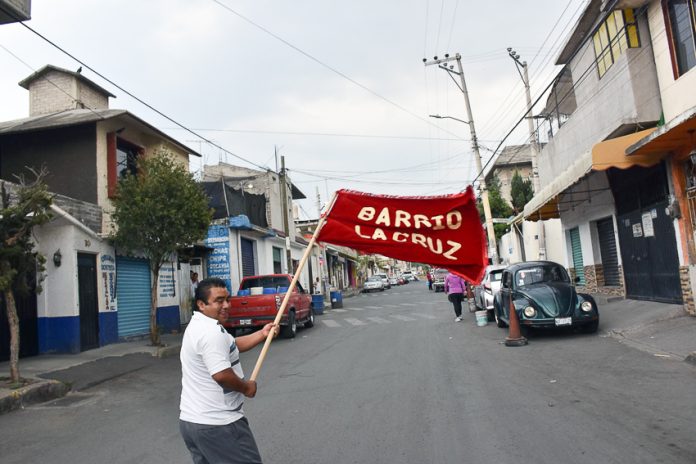Shouts and laughter fill the air as a group of women struggle to haul a cross that weighs about 250 pounds up an incline leading to Xilotepec, a hill on the outskirts of San Gregorio Atlapulco.
That cross, and two others, are being returned to their place on the crest of the hill two days after they’d been taken down, repainted and decorated. Toting the crosses back up the hill is the culmination of Día de la Cruz (Day of the Cross), which is actually a three-day event that takes place May 1–3 in San Gregorio and in many Mexican pueblos every year.
The hills outside of San Gregorio, located in the Xochimilco borough of Mexico City, are filled with unexcavated ruins. Guarding one of the entrances to the ruins — believed to be in large part the remains of a Mexica religious center — are two giant boulders, referred to in the pueblo as los monolitos (the monoliths).
One of these depicts a priest of Xipe Totec, the Aztec god of, among other things, vegetation and spring. That monolith is still erect, but next to him, lying on the ground, is a monolith depicting Cihuateteo (locals call her La Malinche), the Aztec fertility goddess.
“That monolith was toppled by the order of Franciscan friars sometime in the decade of 1770,” said Javier Márquez Juárez, who has authored two books and several articles about the ruins.
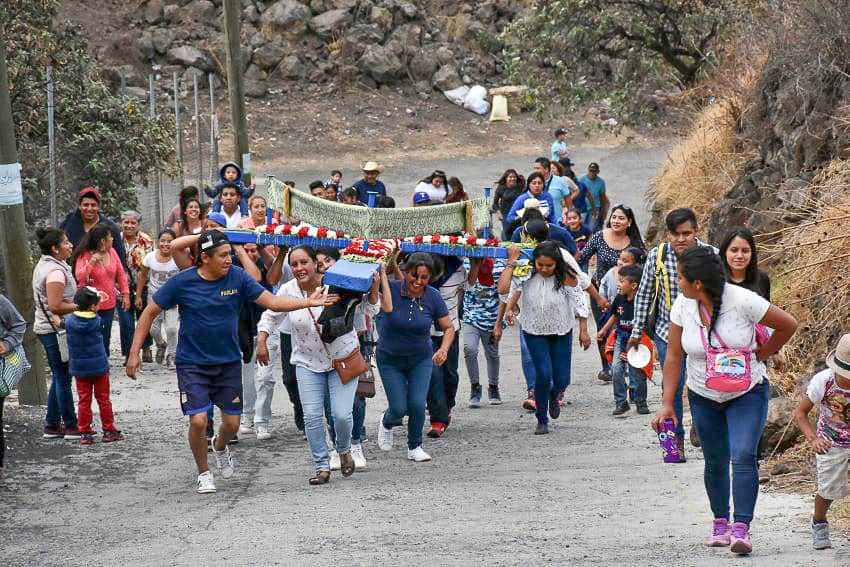
They probably tried to knock down the priest as well — there’s a small hole in his center that may have been drilled so that they could place a pole in it, in an attempt to dislodge him — but if they did, he wouldn’t budge.
Despite the Franciscans’ efforts, the monoliths maintained their grip on the people.
“Sometime in the late 18th century, Franciscan friars discovered that indigenous people were still performing their ancient rituals in front of the monoliths,” continued Márquez.
This apparently didn’t go over well with the friars. “They placed three large crosses on the top of the hill above them,” he said.
This is similar to what Spaniards did during the Conquest when they frequently built churches or chapels atop pyramids to assert Catholicism’s dominance over indigenous religions.
Día de la Cruz has an extremely long history. Its roots stretch back to 326, when St. Helena, mother of the Roman emperor Constantine, went to Jerusalem to search for remnants of the cross on which Christ is said to have been crucified.
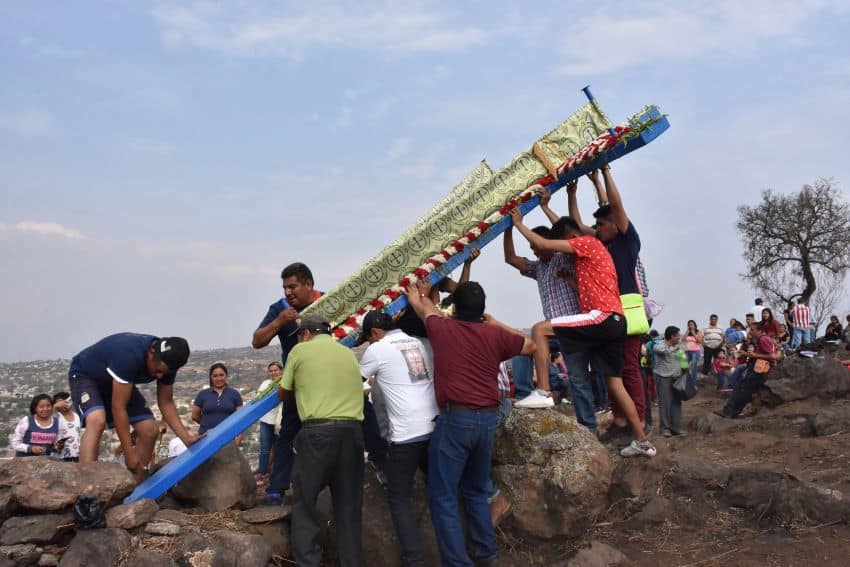
On May 3 of that year, she found pieces of wood on Calvary, the traditional site of Jesus’s crucifixion. One of the pieces supposedly healed the sick and raised the dead, marking it as the True Cross, the one that held Jesus. Día de la Cruz was first celebrated in Spain on May 3, 1625, when a cross was erected in the district of San Lázaro. It’s still celebrated in Spain as well as in Mexico and many other Latin American countries.
While the religious holiday is a Catholic celebration, its occurrence in the early part of May coincides with the beginning of the rainy season, “a critical time for indigenous cultures,” said Uriel Muñoz Garcia, the mayordomo (lay religious leader) who organized the day in Barrio La Cruz, the neighborhood in San Gregorio that’s responsible for caring for the crosses.
Pre-Colombian cultures performed ceremonies during that time to ensure a good rainy season and harvest. This coincidence almost certainly led to the celebration being more easily accepted by indigenous groups, and as Márquez pointed out, the cross is also a potent symbol in indigenous religions.
“For the Náhuatl cosmovision, the four cardinal points form a cross: Quetzalcóatl is east, Xipe Totec is west, Tezcatlipoca, north and Huitzilopochtli, south. But the indigenous cross has arms of equal length,” he said.
Although the ceremony’s roots go back almost 1,700 years, it wasn’t observed in San Gregorio until about 50 years ago. “One of the crosses was broken,” explained Muñoz, “and they took it down and fixed it.”
In Mexico, the day is also celebrated by construction workers. “When working, they’ll place a cross at the worksite,” said Márquez.
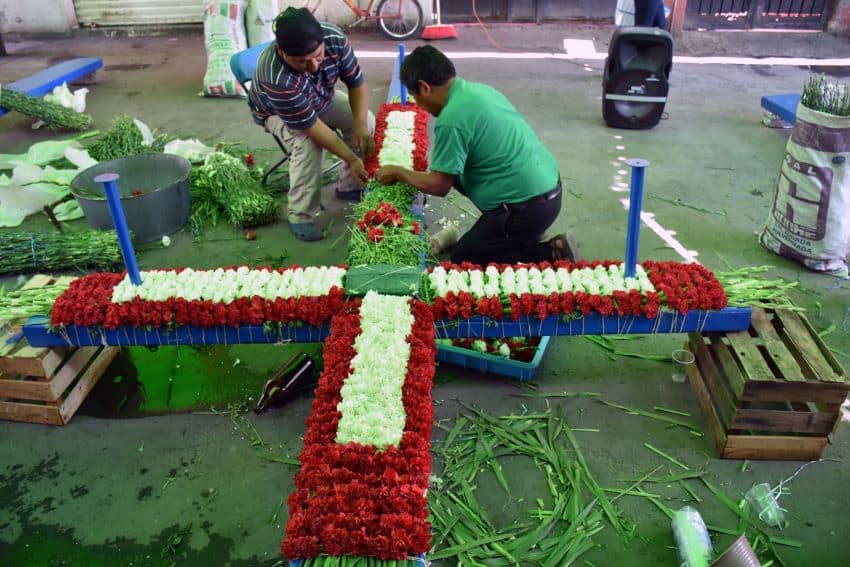
On May 1, a group of about 20 men from Barrio La Cruz make their way to the top of Xilotopec. Large rocks at the base of the crosses are moved, and the crosses are carefully lowered and hoisted onto the men’s shoulders.
Although not dangerous, the path is narrow, rugged and steep in places, making the descent tricky and slow. The group makes its way through the pueblo to Barrio la Cruz, where the crosses are stored on a street that’s been blocked off. Then, of course, a meal is served. Later in the day, the crosses are stripped of old paint and a fresh coat applied.
Early on May 2, neighbors, many of them Muñoz’s relatives, gather to decorate the crosses with red and white carnations. Like virtually all Catholic ceremonies in Mexico, there are pre-Hispanic elements to Día de la Cruz.
“During the pre-Hispanic era, they celebrated the fiesta of Hueytozoztli between April 29 and May 2,” explained Márquez. This is a festival dedicated to Tláloc, the Aztec rain god.
“During this fiesta, [Aztecs] climbed the mountain and decorated an image of Tláloc with flowers like they now do to the crosses. Carnations are used here because they last a long time, but roses, gladiolas and other flowers can be used. The red and white colors have a pre-Hispanic significance relating to war and agriculture.”
A cloth, called a sendal, is also tied on the crosses in three places.
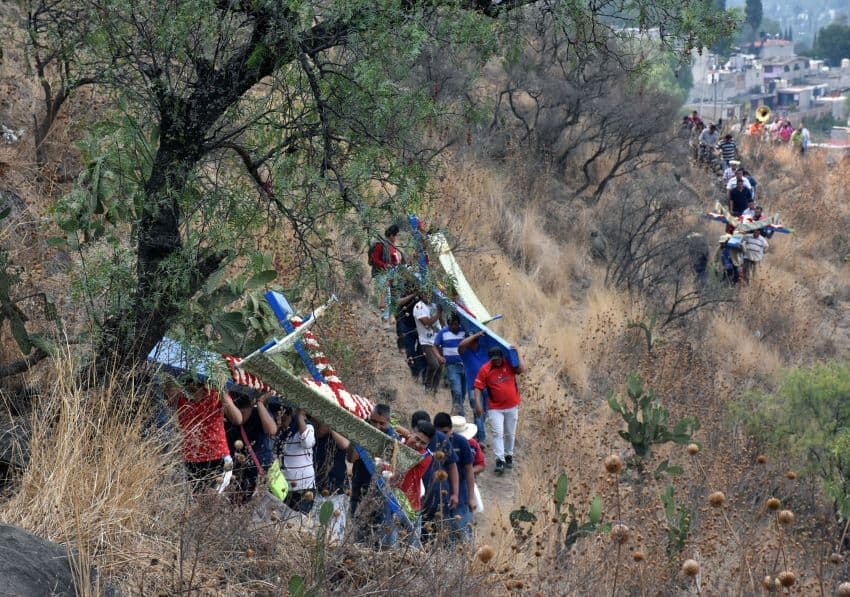
“From the Catholic point of view, the sendal represents the three points where Jesus was nailed to the cross,” Márquez said. “They also symbolize the crowns and necklaces that [local Aztec] monarchs hung on the monolith carved with the image of Tláloc and those that hung on the head and feet of [the monarchs] according to the pueblo’s importance. The Aztec king placed the crown on his head, and the Xochimilco king placed it on his feet because it was the weakest pueblo.”
At night on May 2, there’s a velación, a ritual that takes place the night before important fiestas. Prayers are offered before the neighborhood’s cross, incense is burned and concheros, traditional musicians, sing and play stringed instruments.
After a midday Mass on May 3, another meal is served. Finally, sometime around 6 p.m., a crowd gathers, the crosses are lifted and cohetes — the bottle rockets that are ubiquitous in pueblos throughout Mexico — announce the beginning of the journey back to Xilotepec.
Márquez noted a relatively new aspect of this and other celebrations in San Gregorio. “Women now also carry the cross,” he said. “This did not happen before.”
The crosses are carefully placed back in their holes and stabilized. Then, more cohetes are lit, and tequila is usually passed around. Once the crosses are in place, a ceremony for the new mayordomo is held.
Being a mayordomo is a large, time-consuming and expensive responsibility. The mayordomo plans for and provides the meals for Día de la Cruz and for other events during the year.
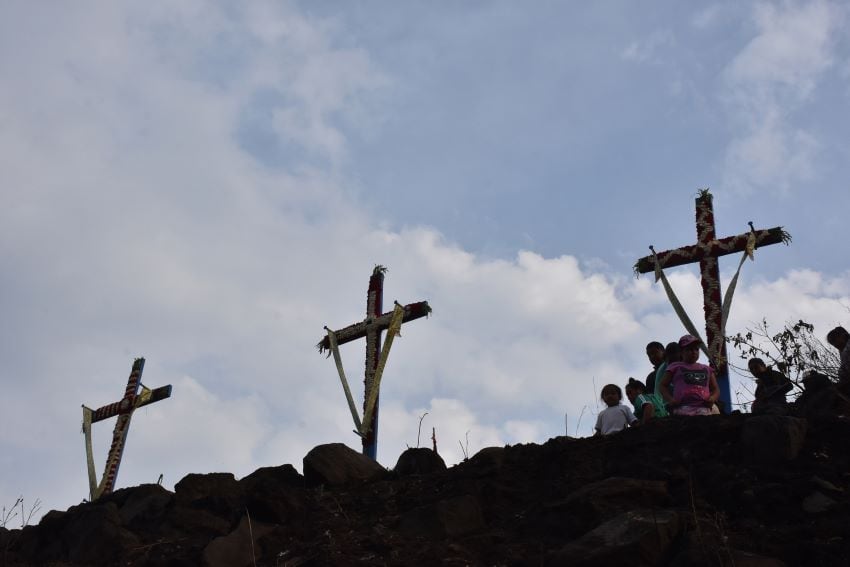
But, said Muñoz, the outgoing mayordomo, “It is an honor to do this. My father and my grandfather were both mayordomos.”
Joseph Sorrentino, a writer, photographer and author of the book San Gregorio Atlapulco: Cosmvisiones and of Stinky Island Tales: Some Stories from an Italian-American Childhood, is a regular contributor to Mexico News Daily. More examples of his photographs and links to other articles may be found at www.sorrentinophotography.com He currently lives in Chipilo, Puebla.
